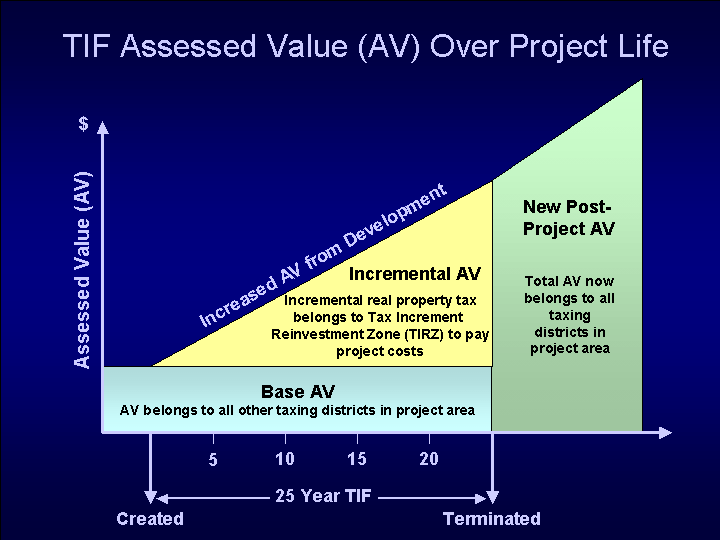Parking lots, blighted blocks and public housing sites: your array of urban assets waiting to be optimized...
Tax increment financing (TIF):
Our first exposure to tax increment financing involved assessing its utility for funding the development of a parking garage for a proposed mixed-use project in downtown Hartford, CT. Over the years, we have been involved in efforts to apply TIF to solving gap financing problems in markets as diverse as California, Texas and New York State. In an era of reduced federal and state resources for economic development, local municipalities have increasingly relied upon tax increment financing structures to spearhead catalytic projects for advancing local economies. To access a presentation regarding the revised statutory authority for TIF in New York State, click the button below. And click here for an article on using TIF that is applicable to most states.
|
Healthcare & real estate:
|
Developers and the public sector are discovering the synergies of incorporating healthcare facilities into shopping center projects and mixed-use developments. Our first exposure to this phenomenon was the development of the 110,000 sq. ft. City Heights Retail Village in San Diego. The project incorporated a 10,000 sq. ft. wellness center operated by a major healthcare institution. GLBA has recently increased its focus on this new paradigm of development and assisted a major affordable housing developer with a proposal to incorporate a federally qualified community health center as part of the ground-floor commercial component of a housing development. A site plan describing the ground-floor development concept for the multi-site project proposal was presented at the 2014 annual conference of the Congressional Black Caucus Foundation. GLBA encouraged a site plan design that would allow for the sizing of the health center to be as small as 4,000 square feet to as large as 10,000 square feet, while also providing for retail storefronts. In addition, project developers should be alert for opportunities to incorporate drug stores into shopping centers and mixed-use developments as they are likely to benefit from locating near healthcare facilities.
|
Wellness center at City Heights Retail Village in San Diego
A community health center operation in Brooklyn, NY
|
|
Lamont Blackstone addressing a Chicago forum on food deserts.
Public housing & commercial development:
Public housing authorities in numerous cities have contemplated how to attract retail amenities to their developments in order to serve public housing residents. We believe that incorporating retail amenities on or near sites owned by public housing projects not only serves residents but also provides opportunities for realizing the value of public housing assets. GLBA was a consultant to the New York City Housing Authority for the redevelopment of Prospect Plaza in Brooklyn. GLBA also developed a plan with New Urbanism elements for the redevelopment of a 15-acre site owned by the Chicago Housing Authority (shown to the right). As a guest speaker at the 2013 annual convention of the National Association of Housing Redevelopment Officials (NAHRO), the following synopsis was provided on retail site planning for public housing sites.
City & town council advisory services:Legislative bodies at the village, town, city and county levels of government are critical stakeholders and decision-makers for many development projects. These public officials often operate on a part-time basis with limited time and resources to assist them in reviewing the merits of multi-million dollar projects. This challenge is compounded if they have no real estate background. In addition, the role of these important decision-makers is sometimes ignored or undervalued by developers who are inexperienced in or skeptical of crafting public-private partnerships. Council members in the Northeast & Mid-Atlantic regions may contact us for information on how to obtain limited pro bono assistance for evaluating or attracting commercial development projects.
|
Urban food deserts:
As part of the founding management for a real estate investment fund focused on the development of inner-city supermarket projects, Lamont Blackstone has been involved with the issue of food deserts for over two decades. In addition, his work has allowed him to meet other thought leaders addressing the issue of providing access to healthy food alternatives. One such thought leader, Mari Gallagher, provided some seminal research on the topic which can be accessed below.
For more information on development issues and insights, visit our blog:
|





